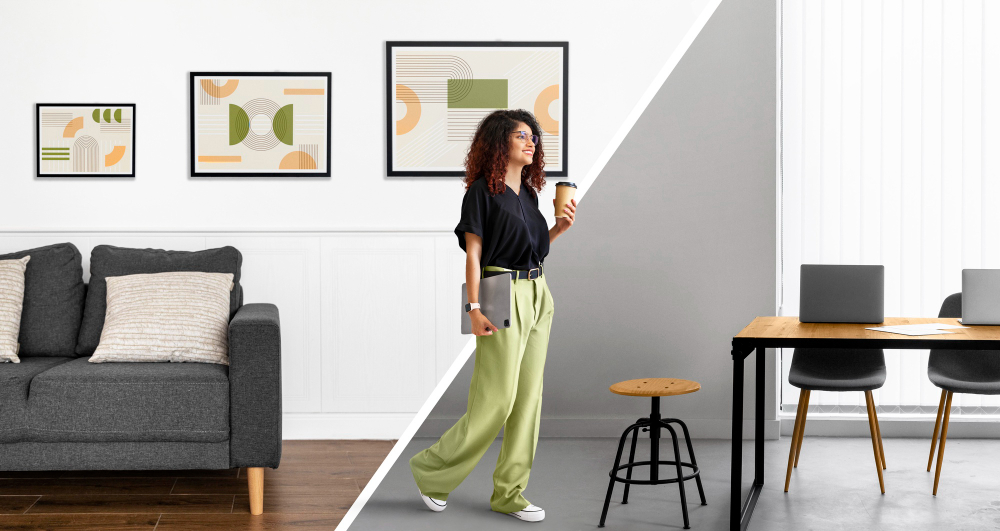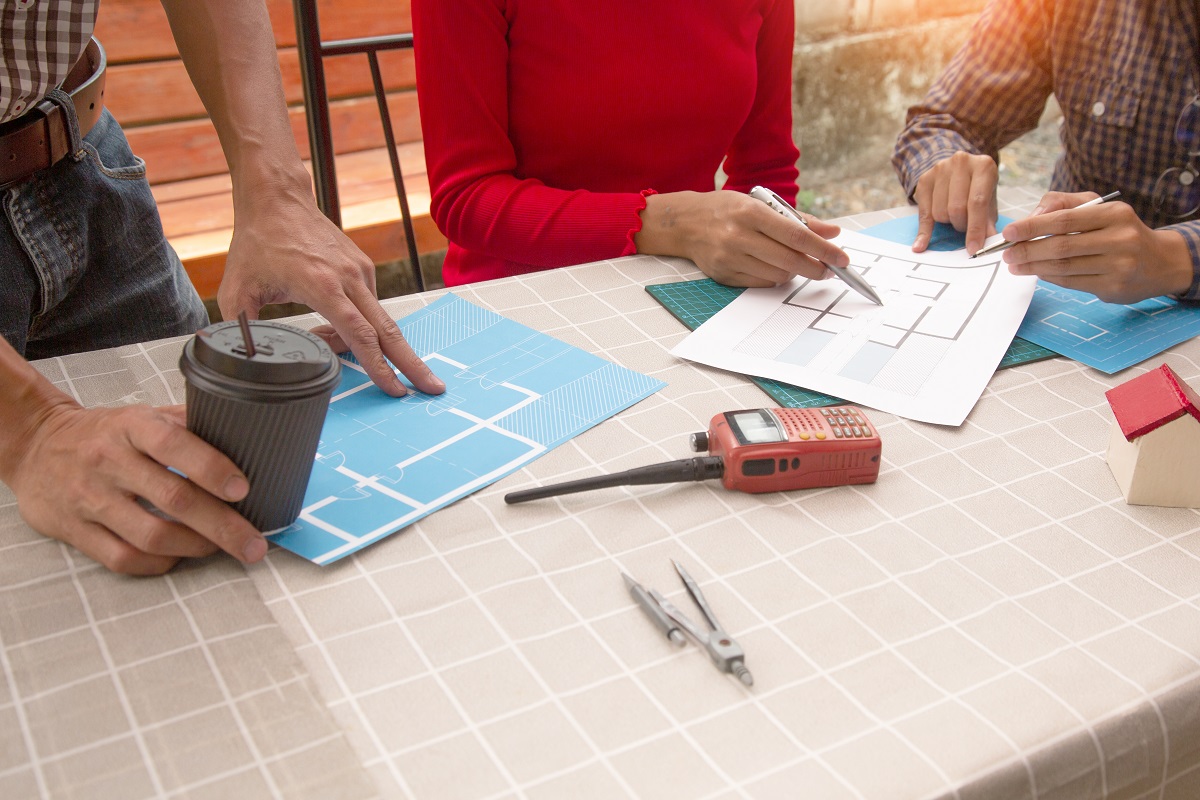5 Tips for Creating a Cozy and Inviting Home
Our houses now serve as a lot more than places for us to sleep, dine, and store our possessions as a result of the rush and activity of modern life. They serve as our refuges from the tumult of the outside world and serve as our sanctuaries. A warm and welcoming house is essential to our well-being and not just an extravagance. It serves as our welcoming embrace at the end of a long day, the setting for priceless memories, and the backdrop to the narrative of our lives.
But why is having a warm and welcoming home so crucial? The significant effects it has on our mental and emotional health are explained. Stress levels can be lowered, happiness levels can be raised, and a sense of home can be fostered by an efficient and tastefully decorated home. It’s a location where we may rejuvenate, interact with loved ones, and find comfort when we’re alone.
5 Tips for a Cozy Inviting Home
This blog post’s goal is to explore the technique of designing a home that exudes warmth, comfort, and welcome. We’ll look at five crucial suggestions that might help you turn your home into a welcoming and cozy home. These suggestions will enable you to give your home the enchanted charm that makes everyone feel at home, whether you’re an expert interior decorator or a newbie in the field of home design. So let’s start this trip together and learn how to make a home that is genuinely warm and welcoming.
Read Also: Interior Designing VS Interior Decoration: What’s the difference?
Tip 1: Use color psychology to design your home.
Do you want free career counseling?
Ignite Your Ambitions- Seize the Opportunity for a Free Career Counseling Session.
- 30+ Years in Education
- 250+ Faculties
- 30K+ Alumni Network
- 10th in World Ranking
- 1000+ Celebrity
- 120+ Countries Students Enrolled
When creating a warm and welcoming home, color is a strong tool. Our emotions and how we see a location are significantly influenced by the psychology of color. You can create a cozy and inviting home that appeals to both you and your visitors by learning how various colors can elicit particular sensations.
Certain colors, according to color psychology, are linked to comfort and welcome. Warm browns, gentle greens, and deep blues are examples of earthy tones that can induce feelings of comfort and serenity. These hues can create an indoor-outdoor atmosphere by imitating the natural environment.
Tip 2: Maximize Space in a Small Home
It can be fun and challenging to decorate a small home. While having a small amount of space may feel like a restriction, it can inspire innovative thinking and imagination in your design decisions. The secret is to maximize the space that is available while preserving a warm and welcoming atmosphere.
Book Now →
- Start by purging and approaching furniture with a minimalistic mindset. Less is usually more in cramped quarters. Pick furniture with several uses that offer storage, such as mounted on the wall shelves or ottomans with secret chambers. This not only makes the most of your available space but also keeps your house neat and well-organized.
- To provide the impression of more space, think about an open floor plan. Walls that aren’t necessary can be taken down to improve the flow of natural light and give the space a bigger, more open feel. When designing an open floor plan, use area rugs to create distinct zones that give each area warmth and visual interest.
- Choose furniture that is proportionate to the size of your room. Bulky furniture can overpower a tiny space, while smaller, sleeker pieces can keep the space feeling open and clean. Seek out furniture with elevated legs so that light may flow below and a sense of space is created.
- Small houses can nonetheless radiate warmth and friendliness. Look at examples of architecture in big cities, such as little homes or small apartments. These areas frequently show off creative methods to maximize every available square inch. To maximize functionality without compromising aesthetics, think about built-in furniture and storage options.
Read Also: The Core Principles of Interior Design

Tip 3: Add Layers of Texture and Pattern
The hidden heroes of the interior design course when it comes to making a home seem snug and inviting are layers of texture and pattern. Your living spaces will feel cozier and more lived in with the addition of these components, which give them depth, visual intrigue, and a tactile touch.
- Add a range of substances to your residence for optimal use of texture. While natural layers of textures like wood, stone, and jute bring a bit of the outside in, soft, fluffy textiles like velvet or chenille can evoke a sense of relaxation. To give your seating spaces more comfort and affection, think about layering throw blankets, cushions, and rugs.
- Strike a balance between strong declarations and subtle accents when adding patterns. Small patterns or textures in neutral tones can create a pleasing backdrop, while large patterns can give a space a more intimate feeling. With trust, mix and match patterns, but strive for a unified color scheme to preserve visual consistency.
- Try out different textures and patterns on unanticipated surfaces, such as accent walls, and ceilings, or even in the design of your drapes, throw cushions, and wall art. The secret is to give your room character and depth without imposing much on the eye.
- Don’t be hesitant to show off your style because personal preference is a big factor in texture and pattern choice. If you favor the refined beauty of damask wallpaper or the rustic appeal of exposed brick, embracing textures and patterns is a skill that can genuinely make your house feel warm and inviting.
Read Also: Interior Design Trends for 2023 You Don’t Want to Miss
Do you want free career counseling?
Ignite Your Ambitions- Seize the Opportunity for a Free Career Counseling Session.Tip 4: Use Soft Lighting
The key to establishing a warm and welcoming atmosphere in your house is lighting. A room can be changed with soft, warm lighting to add coziness and relaxation. To effectively light your home, take into account the following suggestions:
- Layered Lighting: To make a well-balanced lighting design, combine ambient, task, and accent lighting. General illumination is provided by ambient lighting, which can be found in wall sconces or ceiling lamps. Reading lamps and under-cabinet lights are examples of task lighting that has a specific use. Accent lighting, such as table lamps or recessed spotlights, highlights important features and provides depth.
- Install dimmer switches on all of your light fixtures: This enables you to change the light’s intensity to fit various situations and emotions. Evenings with soft, subdued illumination can provide a warm, welcoming feel.
- Warm Color Temperature: Opt for light bulbs that have a warm color temperature between 2700K and 3000K. These bulbs give off a gentle, yellowish light that resembles the warmth of sunlight and makes your room appear cozier.
- Table and lamps: Table and floor lamps should be carefully positioned in living spaces, bedrooms, and reading corners. These fixtures can produce a cozy, focused glow that promotes warmth and relaxation.
- Candles and fireplaces: If you can, include a fireplace or candles in your décor. A cozy home-like environment can be produced by the delicate, flickering light of candles or the mellow light of a fireplace.
- Utilize transparent drapes: Utilize transparent drapes or blinds that let sunlight filter through to maximize natural light during the day. Natural light not only makes an area brighter but also helps people feel more content.
Tip 5: Add Personal Touches
A warm and welcoming home’s heart and soul are its unique touches. They give your room personality, warmth, and a sense of your particular identity. Here are some pointers for successfully adding personal touches:
- Photo Gallery: Fill a wall with your favorite family pictures and priceless memories for a photo gallery. You are reminded of the affection and relationships that make your home distinctive by prominently showing these photographs.
- Custom artwork: Commission or produce art that speaks to your hobbies and interests. Personalized art, whether it’s a painting, a sculpture, or a handmade craft, gives your decor a sense of authenticity.
- Display your collection: Display your collection of memorabilia and mementos from your trips or interests. These things add character to your home and encourage conversation by telling tales.
- DIY projects: DIY projects or handcrafted decor are also acceptable choices.
Conclusion
We’ve looked at five key ideas that may make even the most basic places into a cozy and inviting home as we work to create a haven of invitation within our homes.
We established the idea of choosing earthy tones for comfort and warm hues for friendliness after realizing the powerful influence of color psychology on our emotions. A pleasant and welcoming ambiance can be created by carefully selecting your color scheme.
We addressed the difficulties of decorating a little house, putting a focus on decluttering, multi-purpose furniture, and open floor designs. Your little home can radiate charm and comfort if you make the most of the available space and reduce clutter.
The magic of texture and pattern was then explored, and it was explained how layering these components may give your living spaces depth and personality. You may design a visually appealing and welcoming space by deftly blending textures and patterns into your decor.
With its capacity to convey warmth and comfort, soft lighting has emerged as a significant component in the search for a cozy home. We talked about the value of tiered lighting, dimmer switches, and pleasant color temperatures, which all help create a welcoming atmosphere in your house.
Finally, we emphasized the value of unique details in making a property seem truly like a home. These items give your area a feeling of personality and connection, whether they are family photos, original artwork, or sentimental mementos.
I encourage you to subscribe to our blog for regular updates and in-depth articles on building the house of your aspirations if you’ve found these suggestions helpful and are eager for more interior design insights.
Additionally, if you’re eager to advance your interior design abilities, think about applying for admission to one of our upcoming interior design courses, including our B.Sc., M.Sc., B.Des and diploma programs at the undergraduate and graduate levels. You can pick up knowledge from professionals and other enthusiasts here. Together, we can keep creating settings that ooze coziness, warmth, and welcome, transforming every day in your house into a great pleasure.
Read Also:







